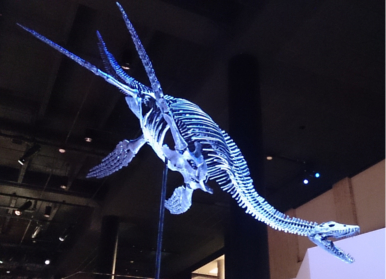- Series:Animals, Evolution’s Mistakes, Fossils, Transcript English
Colossians 2:8
“Beware lest any man spoil you through philosophy and vain deceit, after the tradition of men, after the rudiments of the world, and not after Christ.”
 If you look up an animal in an encyclopedia, whether that animal is extant or extinct, you will usually be presented with a cladogram, which looks like a sideways family tree, and it represents the supposed evolutionary descent of the creature. Building up these cladograms has been a highly sophisticated feature of evolutionary theory and research for a long time. What you may not have realized is that some parts of these cladograms do not represent real creatures. These portions of the cladograms are referred to as ghost lineages.
If you look up an animal in an encyclopedia, whether that animal is extant or extinct, you will usually be presented with a cladogram, which looks like a sideways family tree, and it represents the supposed evolutionary descent of the creature. Building up these cladograms has been a highly sophisticated feature of evolutionary theory and research for a long time. What you may not have realized is that some parts of these cladograms do not represent real creatures. These portions of the cladograms are referred to as ghost lineages.
The reason for a ghost lineage is as follows. Evolutionary geologists and paleontologists have agreed on the age for certain rock layers. This is because geologists date rocks based on the index fossils within them while paleontologists date the fossils according to the rock layer in which they were found. But sometimes an out of place fossil gets found. For example, certain plesiosaur fossils were found in Cretaceous rocks. When a plesiosaur was found in Jurassic rock, which evolutionists thought to be 50 million years older, they had a dilemma. On the one hand, they could re-date one of the rock layers – but that would alter the dates of other fossils. So they chose to invent a lineage between the “older” and “younger” fossil across their 50-million-year gap.
Biblical creationists understand that almost all fossils were made during the Flood, so the concept of out-of-place fossils does not arise.
Author: Paul F. Taylor
Prayer: Thank You, Father, that Your word always speaks the truth. Amen.
Ref: Dyle, S. and Nethrcott, P. (2014), Ghosts in the Rocks, < https://creation.com/ghost-lineages >, accessed 11/30/2018. Image: Kim Alaniz, CC BY-SA 2.0.
Copyright © 2019 Creation Moments, Inc.
